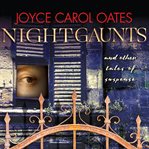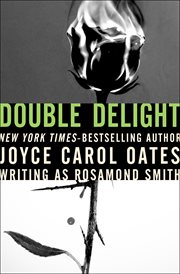Review by Booklist Review
In her latest tales of suspense collection, following DIS MEM BER (2017), Oates dramatizes mysteries of the mind, her forte. An expert in crafting escalating inner monologues as her narrators struggle against malevolent circumstances and the mental aberrations trauma engenders, Oates continues her audacious inquiry into sexual terrors in six substantial, insightful, and creepy stories. Overweight, aging, boozy New England faculty wife Elinor decides to take revenge, but only in the fairest way possible, against the latest beautiful long-legged girl entrancing her husband. In Sign of the Beast, young Howard, husky, clumsy, and tagged with a birthmark on his cheek, is appalled and aroused by his wildly inappropriate Sunday-school teacher, and when her body is found, his reaction shocks everyone. Oates unites a vulnerable misfit and a mad scientist in The Experimental Subject, a grotesque tale with a redemptive twist. The intriguing title tale is a sensitive, clever, and affecting tribute to horror master H. P. Lovecraft, who coined night-gaunts to describe the eerie creatures that plagued him. Oates' spookiness is visceral, psychologically involving, and socially astute.--Seaman, Donna Copyright 2018 Booklist
From Booklist, Copyright (c) American Library Association. Used with permission.
Review by Publisher's Weekly Review
The eponymous creatures haunting the Providence, R.I., mansion where the gothic title story is set seem about as terrifying as toddlers draped in bedsheets compared to some of the humans in this unsettling collection from Oates (Beautiful Days). "Sign of the Beast" centers on Mrs. S___, a sadistic Sunday school teacher who both angers and sexually arouses her lumbering, self-conscious student, Howard. In "Walking Wounded," L___, a 41-year-old cancer patient "eviscerated" by his surgeries, starts stalking a wraithlike young woman-when he's not fantasizing about chloroform and dumping a body in the local lake. Ghastliest of all, however, are the scientific researchers of "The Experimental Subject," in which senior technician N___, acting with the enthusiastic backing of his government-funded primate laboratory team, performs an experiment on ungainly undergrad Mary Frances that may raise the hackles of #MeToo supporters. The upsetting journey is in no way redeemed by the slapdash resolution. Oates pushes the boundary between the disturbing and the offensive with mixed results. Agent: Warren Frazier, John Hawkins & Assoc. (June) © Copyright PWxyz, LLC. All rights reserved.
(c) Copyright PWxyz, LLC. All rights reserved
Review by Kirkus Book Review
The latest in Oates' (Beautiful Days, 2018, etc.) vast bibliography further explores the tense dynamic between lust and revulsion that has been the terrain of much of the author's recent work.The characters who wince through this intimate, unrelenting collection are people who live on the periphery of larger lives. We meet a frustrated faculty wife whose identity has been eclipsed by both her husband and his lovely female students ("The Long-Legged Girl"); a teenage boy whose lusts are baffled by the double-speak of an adult world that castigates him even as it draws him in ("Sign of the Beast"); a mistress waiting in doubled yearning and disgust for her brutish lover's arrival ("The Woman in the Window"). A longtime master of the unreliable narrator, Oates lures the reader into compacts with characters whose sympathies turn out to be warped or downright murderous. Is the pitiable L____ in "Walking Wounded" excising snippets of sadist eroticism from a scholar's posthumous work, or is he creating them in his own active life? Is the grown son in the title story the victim of his father's paranoid madness or the inheritor of his infectious damnation? In the most challenging story of the collection, "The Experimental Subject," Oates details the scientific process by which N____, a senior lab technician at a prestigious university, woos the unwitting woman who will gestate the first human/chimpanzee hybrid fetus. N____, who is described as having "the advantage of invisibility that is the particular prerogative of his species: deceptively bland Asian face, wire-rimmed eyeglasses, short-cropped very black glossy hair," chooses the dim, hopelessly nave Mary Frances for her isolation, her vulnerability, her "stolid mammalian figure," and her coincidental likeness to the chimpanzee sperm donor who fathers her child. It is a fever dream of a storyforthrightly nightmarishwhich gleefully transgresses the boundaries of identity politics in favor of the earthiest of human truths, and yet there is very little work done to examine the moral implications of the situation from the other side of those boundaries. As with many of the stories in the collection, "The Experimental Subject" ends in a flurry of unlikely action, signifying not so much character or plot resolution as the author's weariness of the situation in which her characters have been embroiled.Consummately well-written, stylistically dashing, but lacking a commitment to engage with the trickier dilemmas of race, class, and gender Oates uses to motivate her plots. Copyright Kirkus Reviews, used with permission.
Copyright (c) Kirkus Reviews, used with permission.


